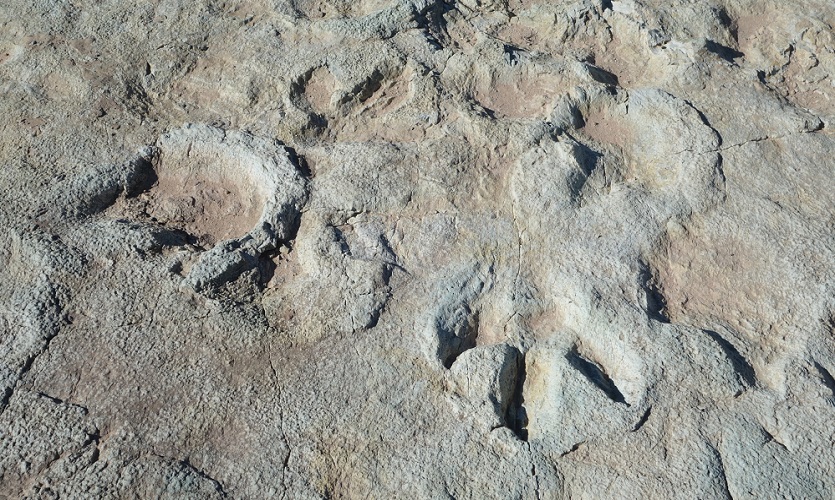Largest dinosaurs walked more like hippos than elephants

"Walking dinosaurs are familiar from TV documentaries and movies such as Jurassic Park. But do we actually know how these animals walked?
Four-footed animals may use different gaits such as trots, walks, and pace gaits. In a trot, one diagonal limb pair (e.g. hind right and front left) moves together, followed by the other limb pair. Many mammals use trots at faster gaits, but reptiles also use trots at slow speeds. In a pace gait, in contrast, the limbs on one side of the body (e.g. hind right and fore right) move together like a camel.
In-between these extremes is the singlefoot gait, in which the time lag between fore and hind feet is equal – a good example being a horse.
The only way to determine the gait of an animal was direct observation of the moving animal, which is not possible for extinct animals.
Trackways 'give up secrets'
Fortunately, extinct animals left tracks which are often fossilised, recording their movement at a particular time during their life. Interpreting gaits from tracks, however, is considered difficult or even impossible given the many unknowns involved, in particular, the body size and shape of the track maker. The tracks continued to keep their secrets.
Writing in Current biology today (2 March, 2022) LJMU researchers Jens Lallensack and Peter Falkingham have discovered that the placement of tracks relative to each other changes in a consistent way when the animal speeds up or slows down. This variation, which can be measured in long trackways, is characteristic for particular gaits. For the first time, it becomes possible to calculate gaits based on trackways.
Lallensack and Falkingham tested the new method on trackways of long-necked sauropods – the largest land animals that ever walked the earth - in Arkansas in the US.
"The result came as a real surprise", says Dr Falkingham, a reader in vertebrate biology. "Many researchers assumed that sauropods walked like elephants, with which they share many similarities, but that doesn't appear to be the case."
Elephants use a gait intermediate between the pace gait and the singlefoot, i.e. the two limbs on the same body side tend to swing together. The gait analysis, in the current study by contrast, revealed that sauropods instead employed a gait intermediate between the singlefoot and a trot: the opposite-side limbs tend to swing together.
Prevent swaying
Why did sauropods move so differently compared to elephants? The answer probably lies in the much broader stance of the former. Elephants place one foot almost directly in front of another, resulting in a narrow
path. Sauropod trackways, in contrast, are much broader. Their particular gait allowed sauropods to have at least one foot on the ground on both the left and right sides of the body at all times, preventing swaying from side to side.
"Sauropods chose a gait that maximised stability but still allowed for efficient walking", says Dr Lallensack.


